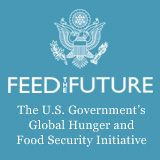Publication
Networks, Barriers and Broad Dissemination
Details
Author(s):
Jill L. Findeis; Luis Sevilla; Maris Da Luz Quinhentos
Type of Document:
Media
Publisher/Journal:
Not Available
Date of Publication:
2012
Place of Publication:
Kigali, Rwanda
Links
Description
A poster presented at the 2012 Global Pulse Researchers Meeting, Kigali, Rwanda- “Transforming Grain-Legume Systems to Enhance Nutrition and Livelihoods”. Abstract: This research examines the interface between social and economic networks and broad uptake of new seed technologies with a particular focus on the common bean. Broad uptake of legume seed technologies is a critical important Goal now at the community level, given the need for legumes for nutrition. Rapid population growth in the developing world and especially in Africa (UNFPA, 2011; NIC, 2008) will put significant pressure on local production to provide food to the food insecure (see Campbell 2007). Data from the baseline survey of agricultural households is coupled with the poverty trap framework of Barrett (2007, 2009) to understand how different types of networks (economic, kin, friend) and network architectures operative at the village level can be utilized to reach broader segments of local populations. Male, female and household networks are explored. Results for Mozambique indicate that networks are more fragmented than anticipated, creating barriers to diffusion (Findeis & Smith 2011). Further, women in particular report being less likely to be reached by traditional dissemination approaches, and report lower levels of trust in village organizations relative to men. Follow-up testing of alternative approaches under Stage II is discussed
